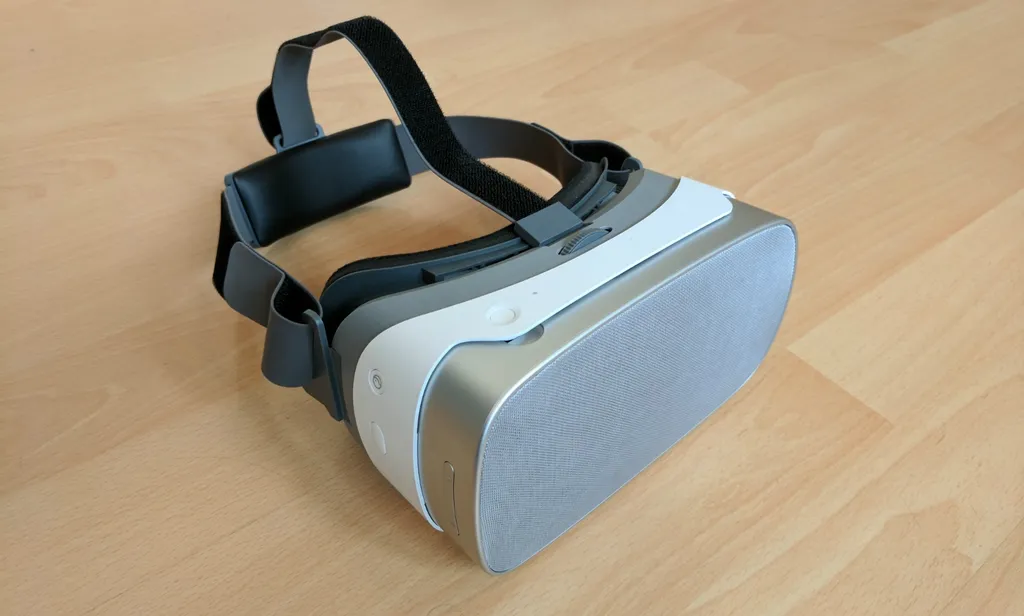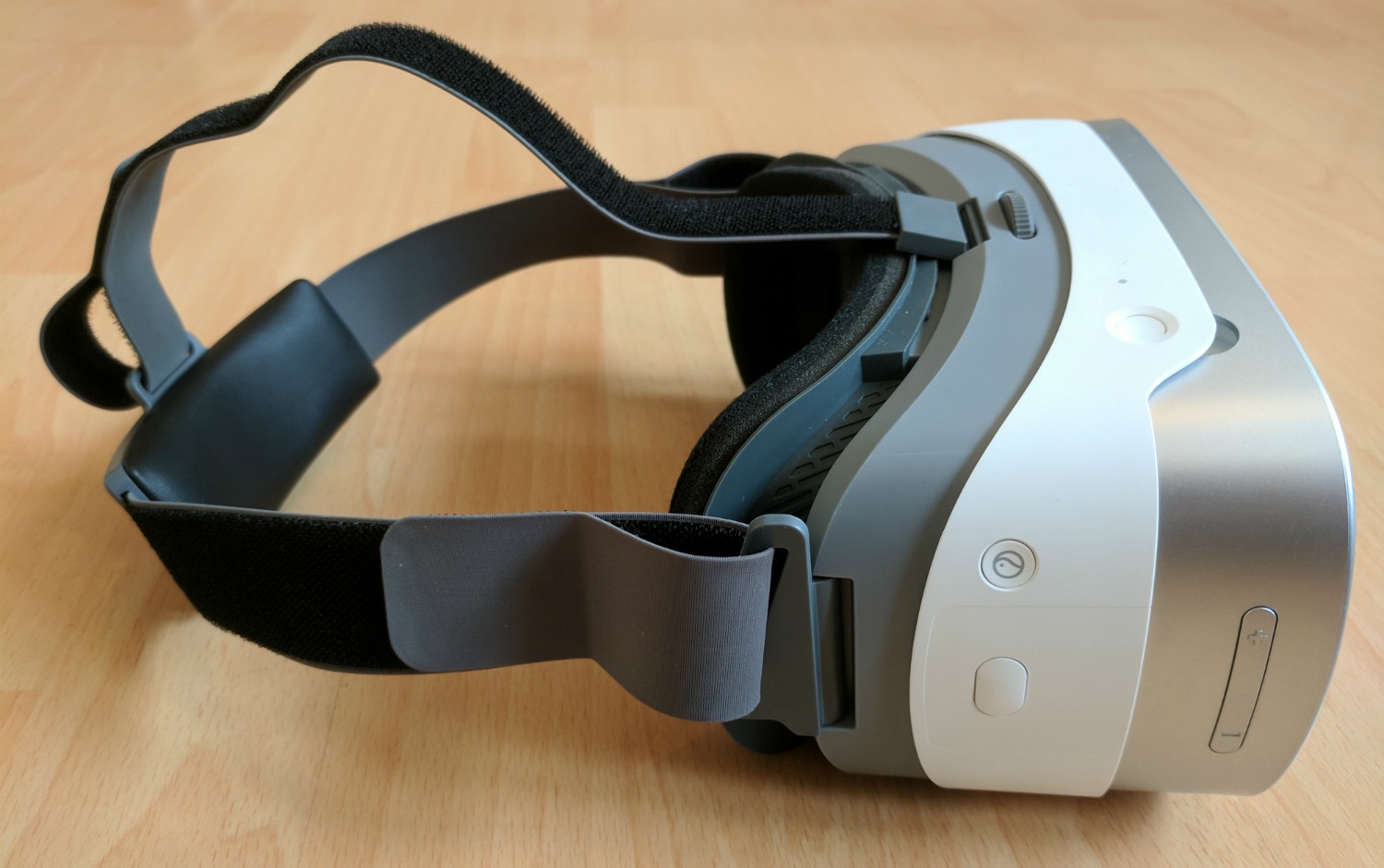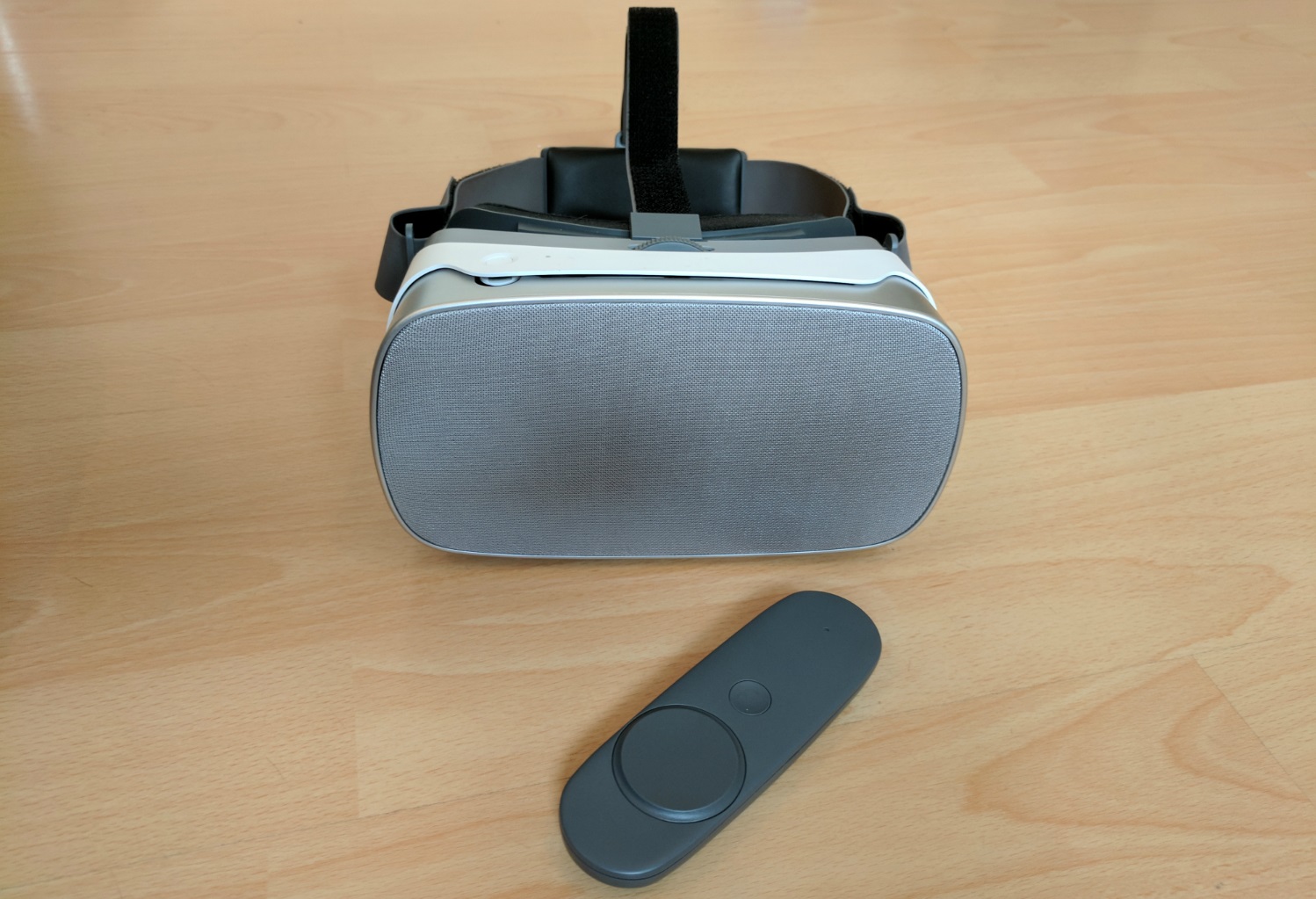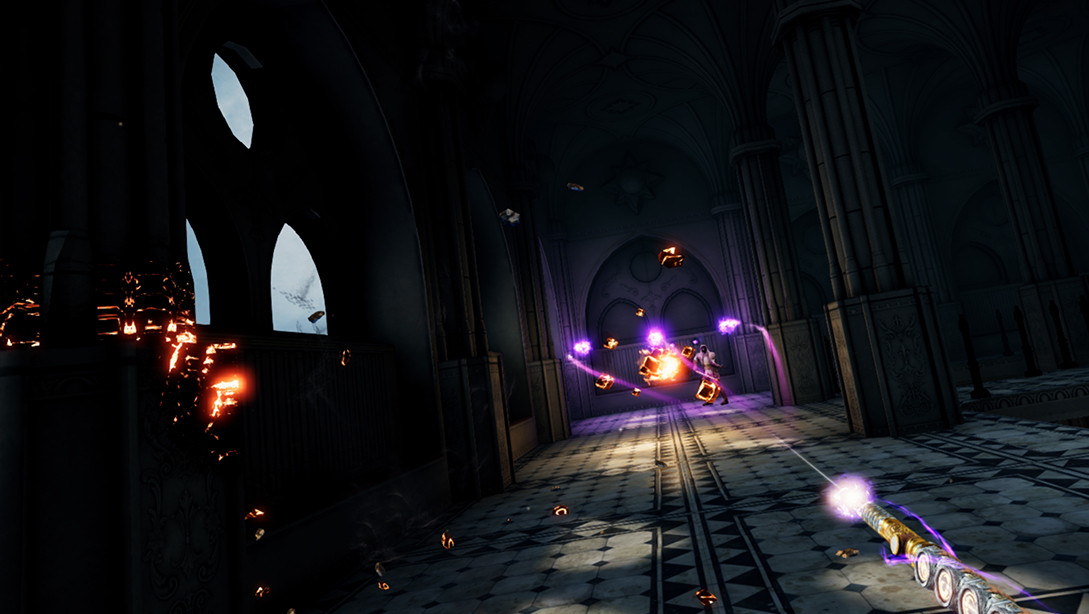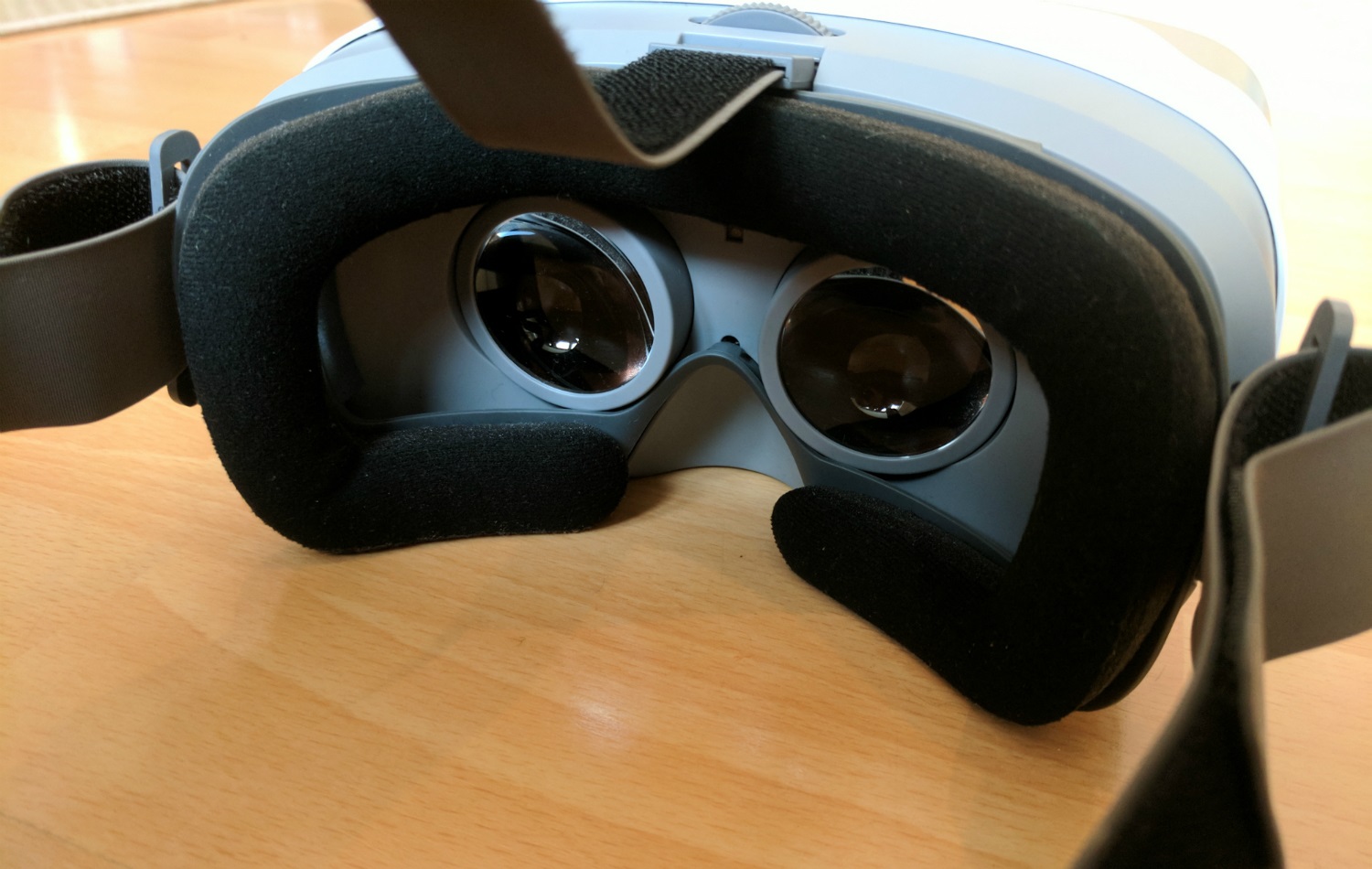The first time I put on the Pico Goblin I have to admit I was floored. The 2.5K display provided a much clearer image than I was expecting for the price of the headset, and the Qualcomm Snapdragon 820 CPU powered visually impressive experiences. As my first taste of standalone VR, I was hugely encouraged. But Pico has its work cut out for it if it’s going to create and sustain true value for consumers in the coming months.
As a standalone headset, the Pico Goblin is a true all-in-one VR device; you don’t need a PC or phone to run it, you just press the power button, pull it over your head, and you’re good to go. At $249, it’s easily the cheapest way to get into VR from scratch (i.e. you don’t own a Daydream or Gear VR-ready phone), but stiff competition from all sides might spell trouble.
Design
At first sight, the Goblin looks a lot like Samsung and Oculus’ Gear VR, which itself is a well-designed piece of hardware. This is very much a case of if it isn’t broke, don’t fix it; velcro straps wrap around the sides and top of your head and are easily adjustable. A thick cushion lines the rim of the headset that rests on your face to keep you comfortable and soak up any possible sweat.
There are five buttons: one to turn it on, one to bring up the menu, one to confirm and two for volume that all sit comfortably within reach when in use. A dial on the top adjusts focus just like Gear VR. While there’s a 3.5mm audio jack for headphones, there’s actually a mono speaker on the front of the device, allowing everyone to hear audio, which is a nice touch as is the microSD slot to expand on the 16GB of flash memory.
There are some elements of the device that feel a little cheap, however. The rubber bridge to rest your nose on is uncomfortable but tolerable with some adjustment. You can even peek into the top of the device and see some of its innards. It would have been nice to get a headset that was a little more seamless in its design.
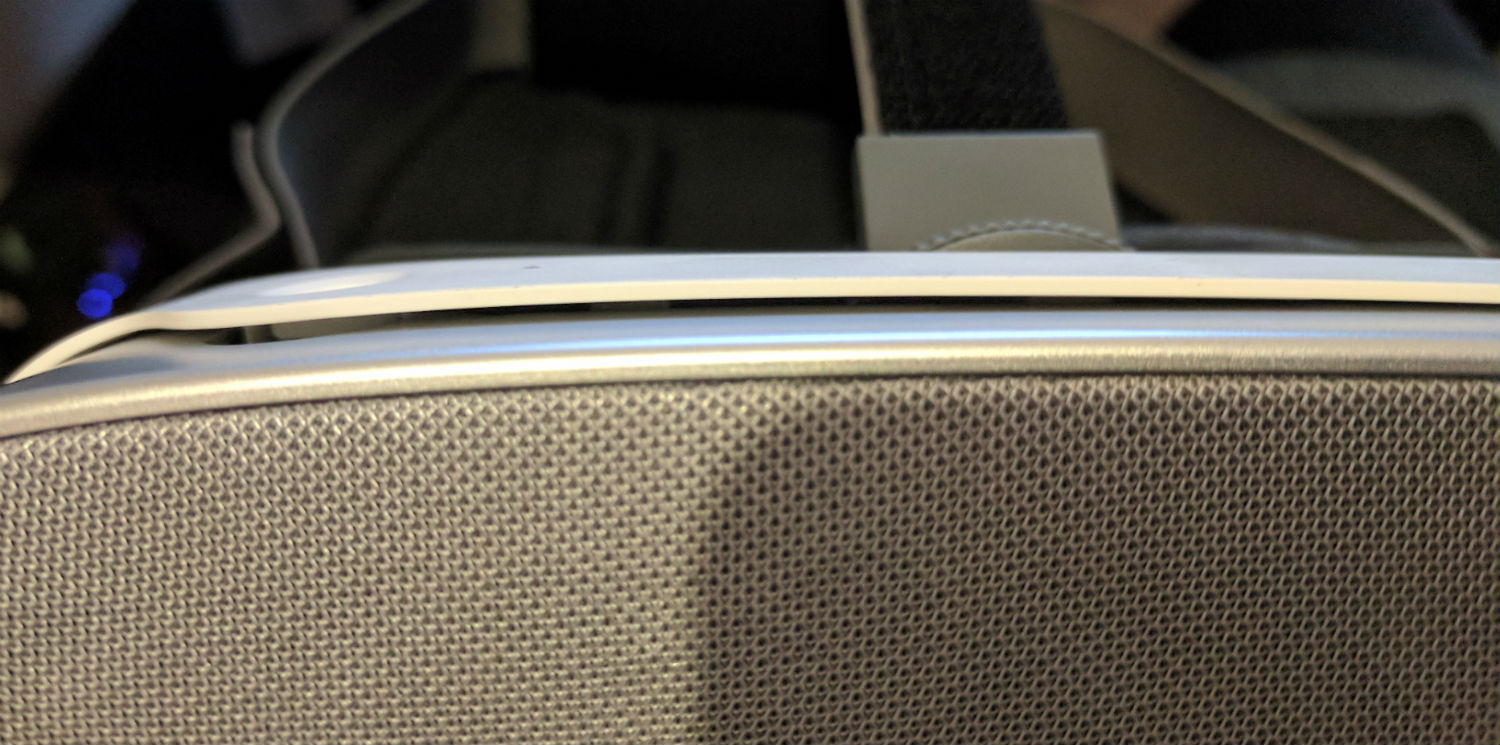
For the most part, though, the Goblin felt comfortable on my head and better designed than Google’s Daydream View. The whole thing weighs 500 grams, which is a little on the heavier side for VR headsets (both Rift and Vive weigh 470g while Daydream with a Pixel phone in it weighs around 370g), but not noticeably so. When attached to my face, there was minimal light leakage.
The bundled handheld motion controller is as simple as both Daydream and Gear VR’s solutions. It’s a super-light remote-like device with two buttons and a clickable touchpad.
Specs
As I said before, the Goblin’s 2.5K display is the real star of the show. The first time I booted up the headset I stared in amazement at the rope of the hot air balloon-themed home space, astonished at the level of detail I was seeing. Existing VR owners might be accustomed to a lot of detail if you’ve been using one of Samsung’s most recent smartphones with 3K displays or its 2016 models, but for $249 the quality of the display is still impressive.
That said, the screen has a 70Hz refresh rate, which is better than the 60Hz seen on many competing smartphones, but still not up to the 90Hz we’ve come to expect of PC-based headsets. If you’ve become accustomed to 90Hz VR then you’ll probably notice the slight blurring when moving the motion controller quickly.
I was able to use the headset for about two hours before the battery ran flat, and charging it up again took about the same time. That means the Goblin wouldn’t be great for long flights where you want to immerse yourself in a virtual theater or play games for the entire journey, but in its defense there aren’t any mobile VR solutions out there right now that can sustain this type of usage. And you could use a battery pack to charge it up while using it if you wanted, though that detracts from the untethered appeal. Also, the Goblin gets bonus points for not generating excessive amounts of heat in this time, like some smartphones are prone to, and performance wasn’t affected either.
One major omission on the hardware side, though, is the expected lack of positional tracking. Both the Goblin and its controller offer three degrees of freedom (3DOF) tracking, meaning you can turn your head on a swivel, but not move it through the virtual space by leaning or walking. That’s the case for all of the mobile VR headsets the device is currently competing with, but it might hinder the Goblin in the long run (more on that later).
Software
The Goblin might not run on a phone, but it’s still using a customized version of the Android operating system. You won’t be able to get on Google Play and download any old Cardboard or Daydream app but instead you’ll have access to a custom storefront with 51 apps available at the time of writing. The device doesn’t always hide its Android origins, though, as you’ll occasionally see transition areas with a virtual display showing the OS’s home icons before it quickly remembers that it’s not a phone and sweeps all of that under the rug.
There’s some good content available on Goblin right now. Wands is probably the most premium app available, but other games like Affected: The Manor and Abyssus offer quality experiences. That said, there’s also a lot of shovelware like roller coasters and other simple experiences that you’re likely to burn out on. They might be great as showcases of VR to other people, but for a device aimed at gamers, the Goblin is lacking in compelling content.
Pico’s real challenge is going to be competing with Gear and Daydream’s ever-growing libraries, especially when Oculus and Google have the funds to create fantastic exclusive content like Augmented Empire and Eclipse: Edge of Light. Without the kind of headline-grabbing apps that we’ve seen from its competitors, we fear the device is destined to be forgotten pretty quickly.
Outlook
Though the Goblin impresses from a hardware perspective as a standalone headset in the here and now, the outlook for the current VR market is perhaps one of the most important areas to consider before picking one up. True, this is a capable VR device largely in line with current mobile VR standards, but the fast-moving pace of the VR industry threatens to outdate it before the year is even out.
For starters, later this year Google is expected to have its own standalone headsets that will support all of the games released for its Daydream platform thus far, and they’ll offer positional tracking. If the price is even remotely comparable to the Goblin (though that may well not be the case) then I’d struggle to make the argument to choose this over that. We know Daydream has a long life ahead of it and Google has been working with great partners, but Pico’s future support isn’t as clear. With rumors that Oculus may releases a $200 standalone device in 2018 too, it gets even harder to recommend an unproven ecosystem.
It’s also important to point out that a lot of people now have VR ready smartphones. If you own one of the last three years of Samsung handsets or any one of the number of Daydream compatible phones, then you can get a Daydream View ($69) or Gear VR ($129) for much less than the Goblin and have access to better content libraries. Ultimately, as impressive as the device is, there may be just too few people that it truly appeals to.
Conclusion
For $249 the Pico Goblin is a truly impressive piece of VR hardware that has its share of issues. While the display clarity delights, I fear the limited number of truly worthwhile VR apps may end up defining this standalone headset. The looming threat of more advanced standalone devices also gives pause for thought. But, if you don’t have a VR-ready smartphone, PC or console and absolutely have to get a VR headset now at a good price, you could do a lot worse than the Pico Goblin.

